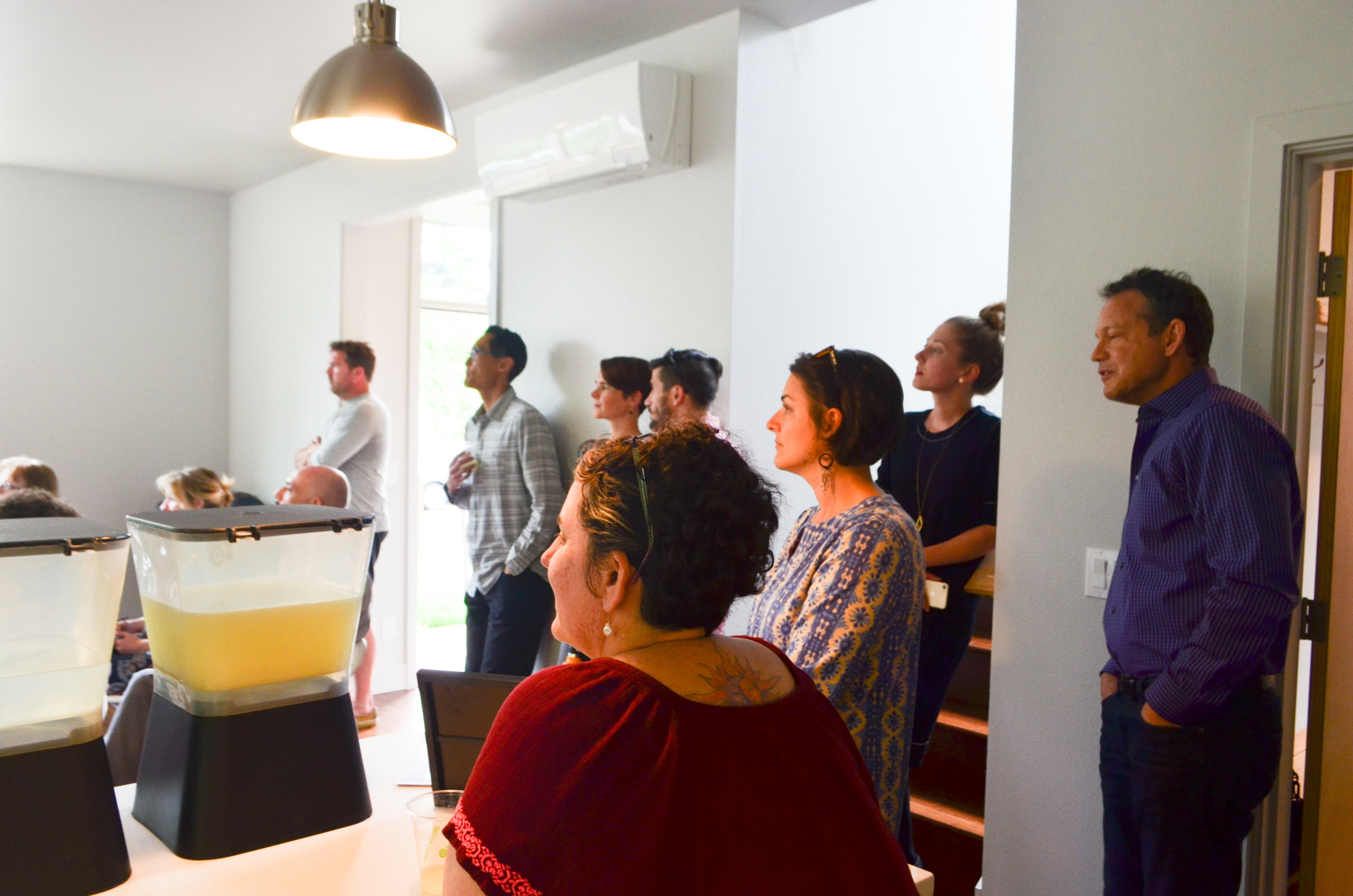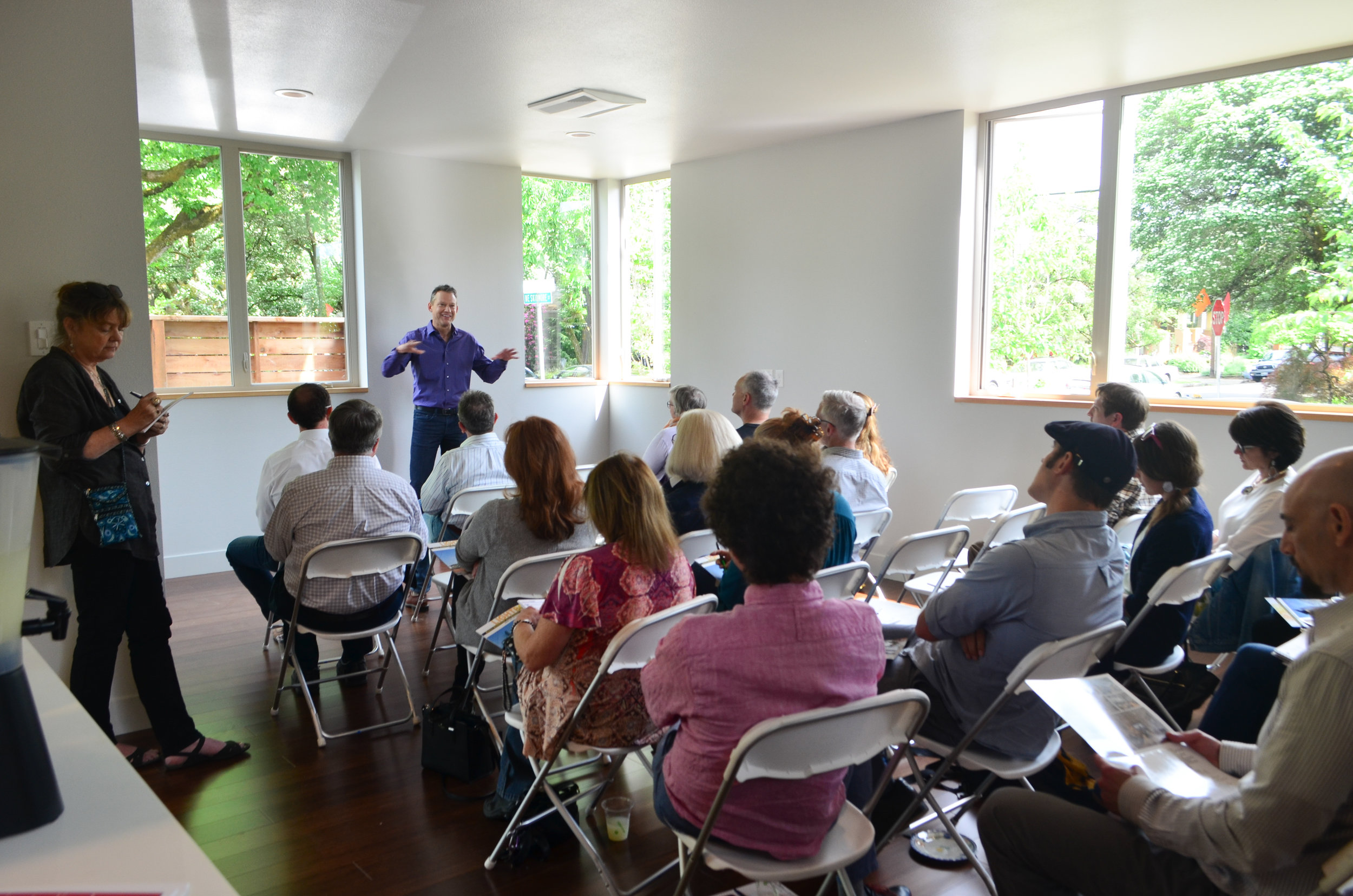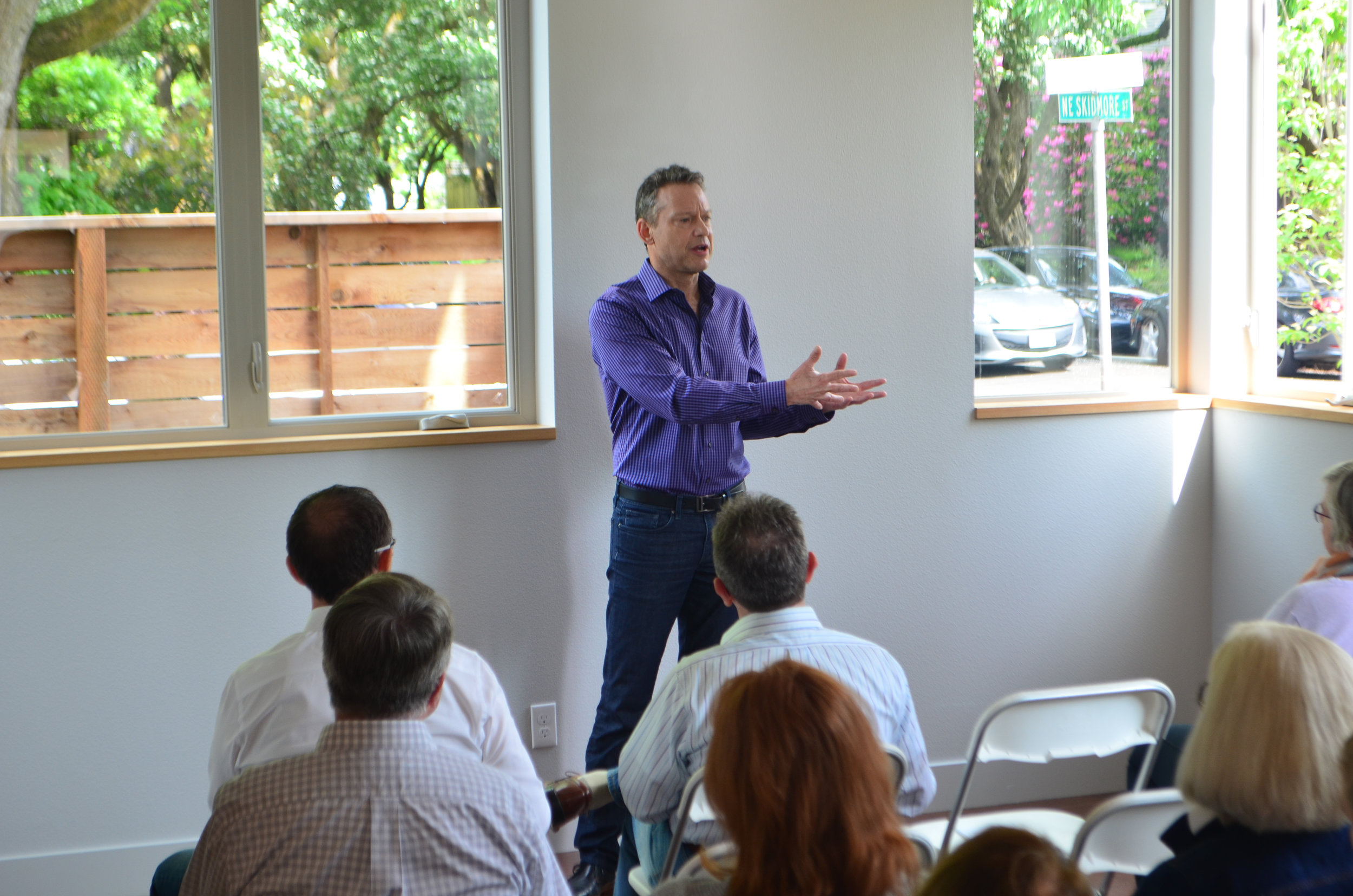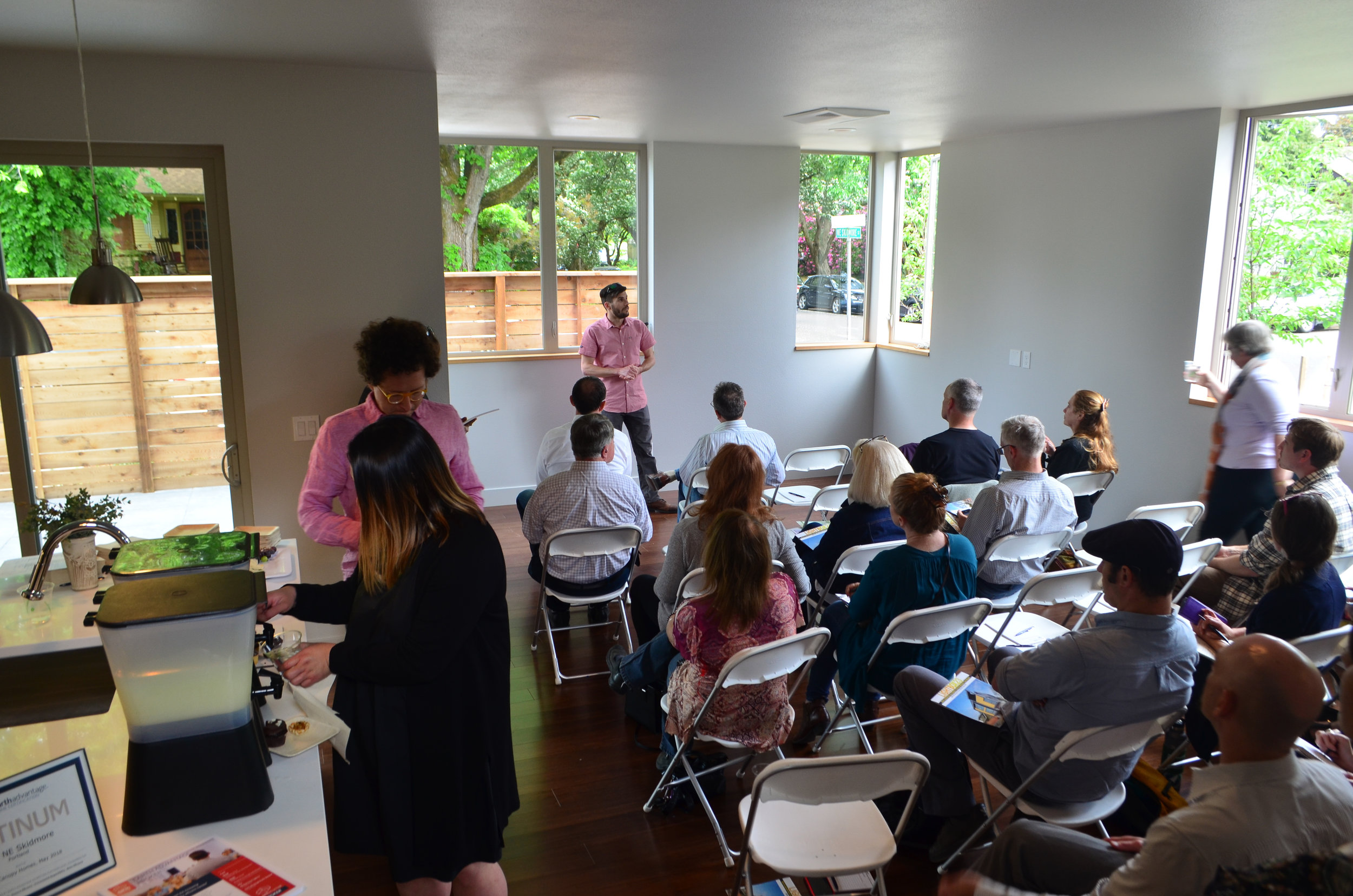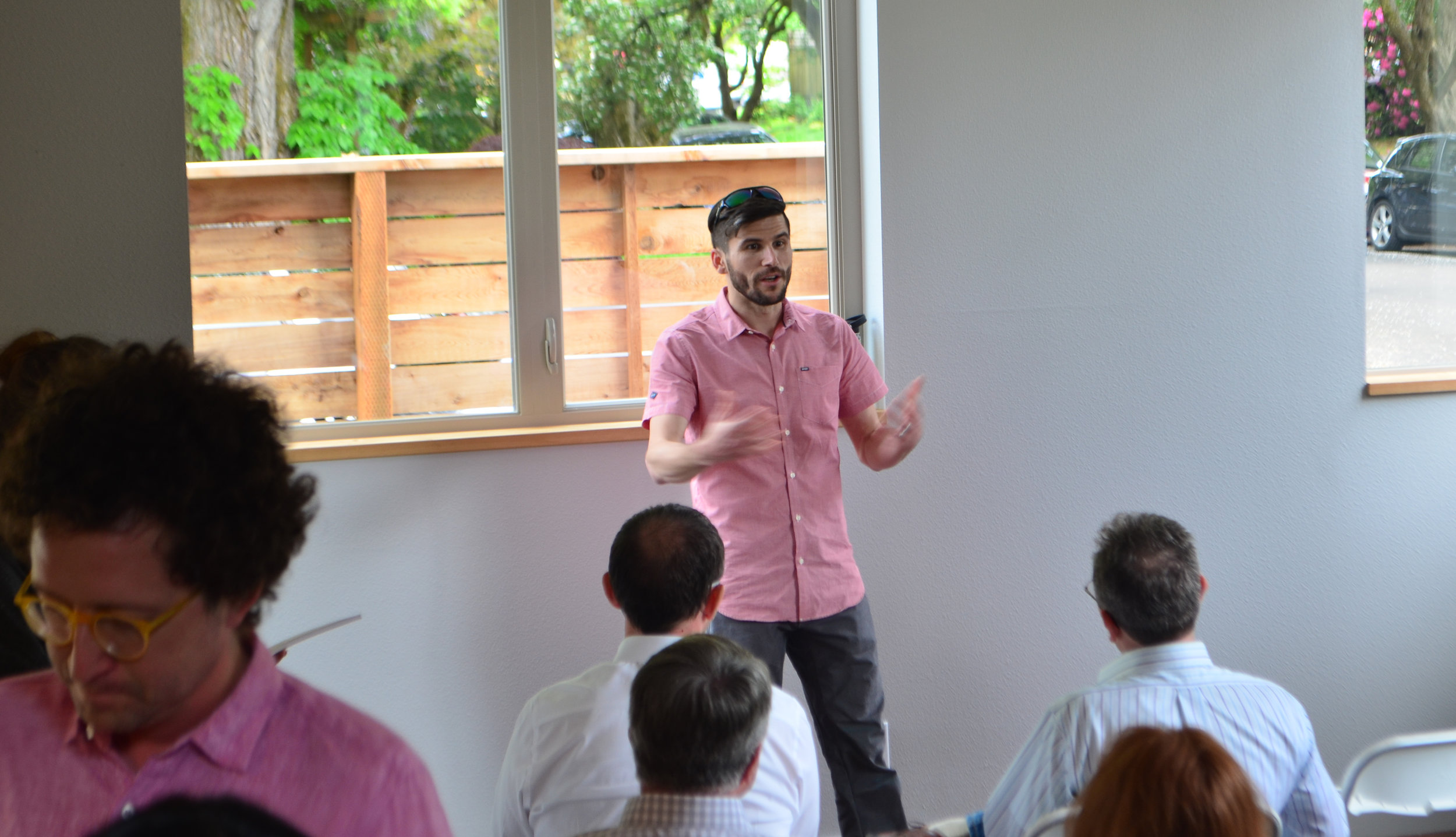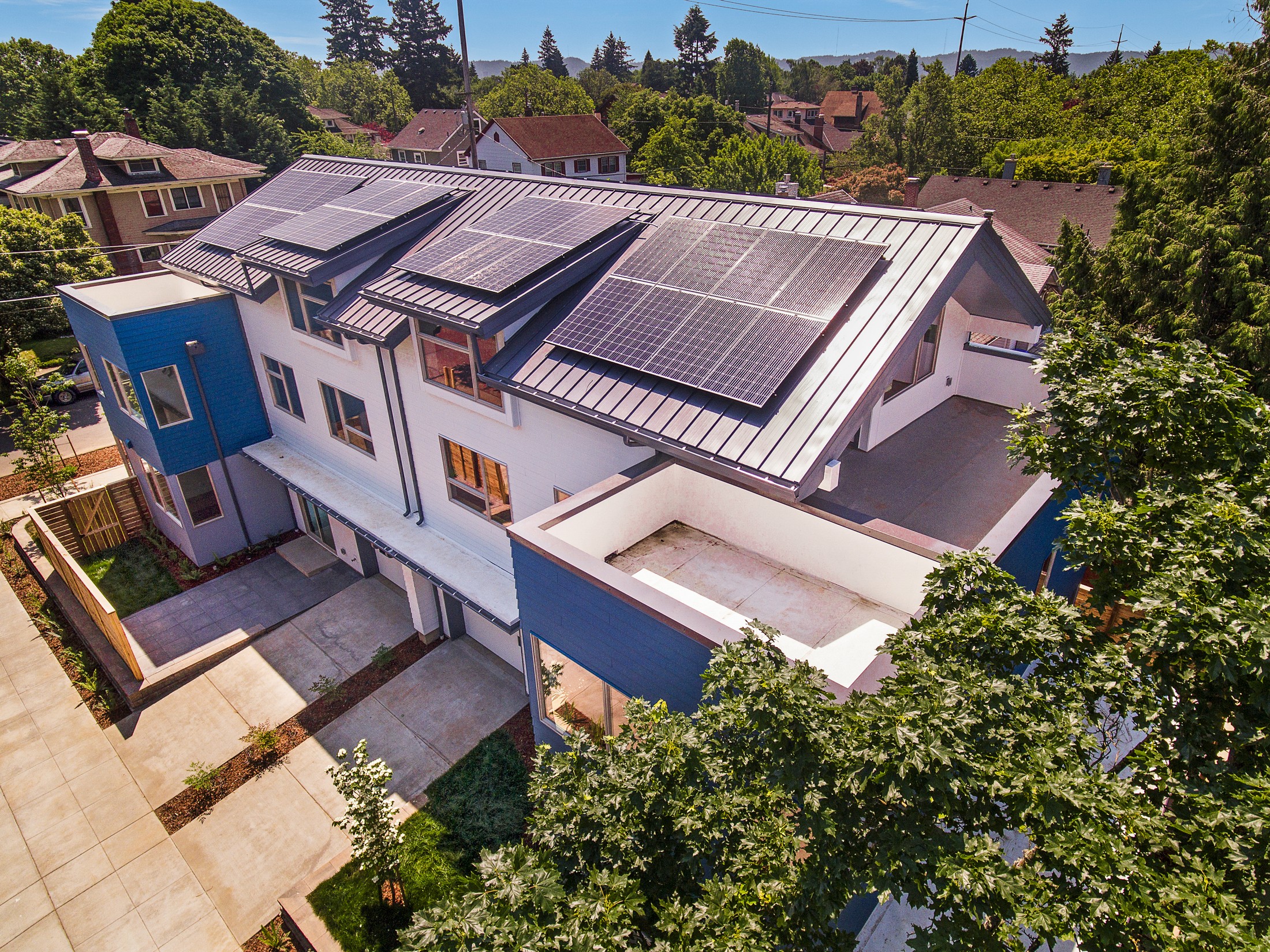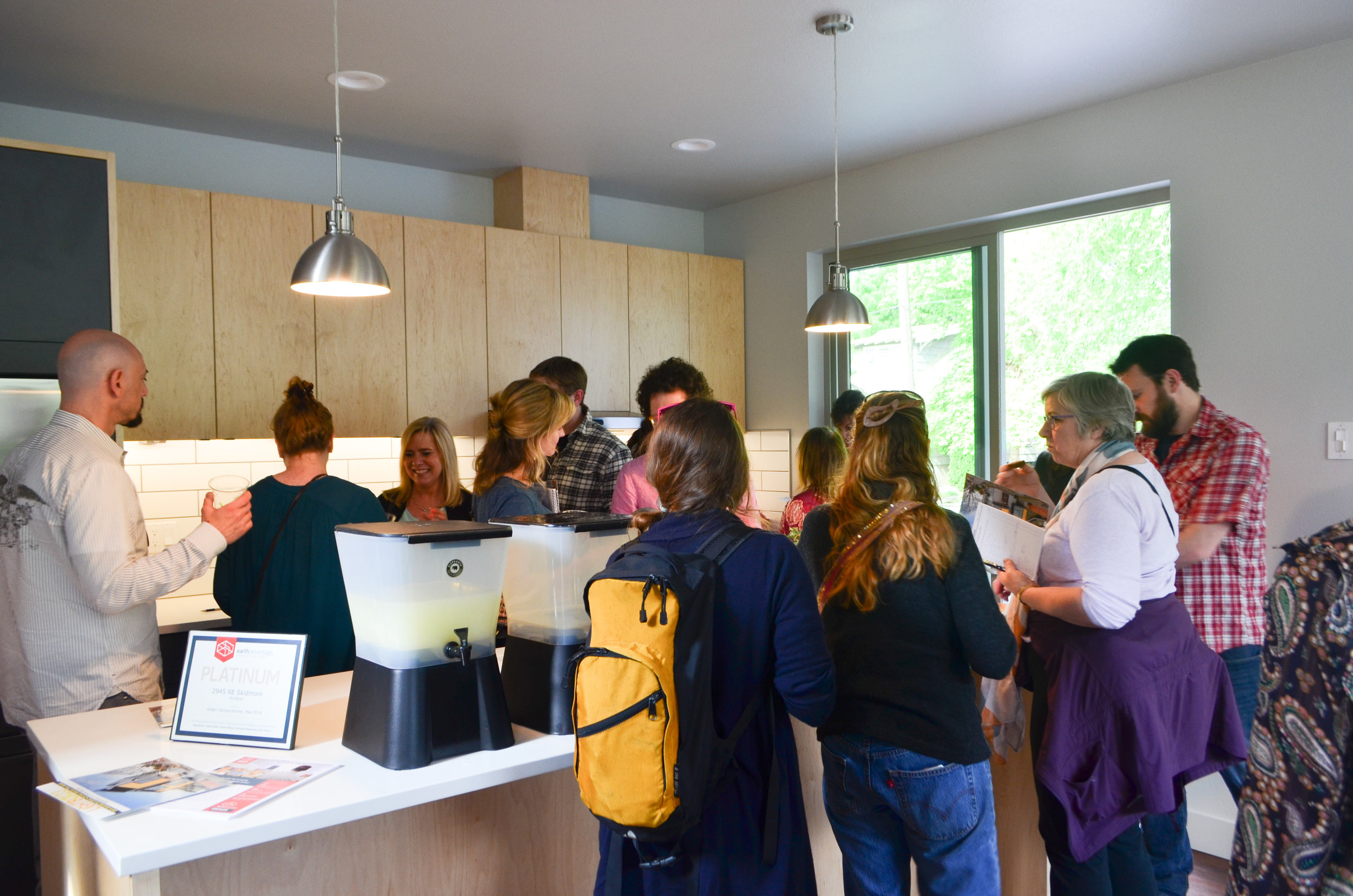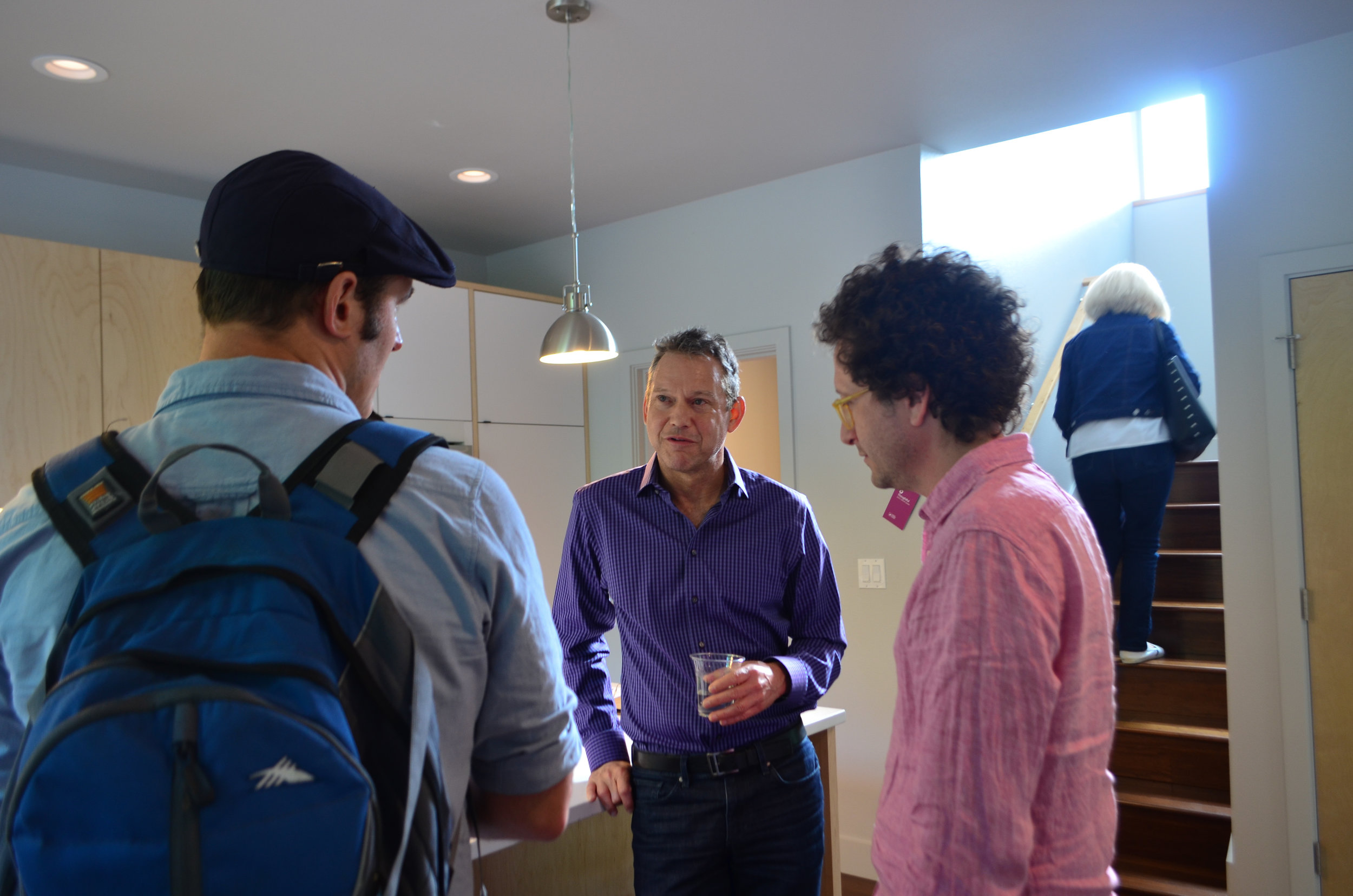Green Canopy introduced the Company’s first Net Zero Energy Homes in Portland by holding a class with valued partners in the movement. New construction “Net zero” or “zero energy” homes are highly-efficient home powered by the sun and typically built to a higher certification standard — in this case Earth Advantage Platinum. With less than 10 ever transacting on the Portland Regional Multiple Listing Service in the last 20 years, zero energy homes are very unique. Real Estate Brokers and buyers are learning more about what zero energy is apart from the apparent solar panels. Benefits like: healthier, allergen-free air quality; comfortable, evenly-distributed heating and cooling; and smart, cost-saving technology.
The event was held in one of the two Green Canopy Net Zero Energy Homes. Introductions were given by Debbie Chase of First American Title who welcomed brokers with bites from Elephants Delicatessen. Green Canopy Cofounder, Sam Lai, explained the mission of the company and the desired outcome of regenerative communities. And Chris Dawkins and Brian Schmidt of Lightbox Portland shared stories about their lessons learned from building their zero energy project that sold last month in Northeast Portland.
To begin the class on zero energy, Peter Brown of Earth Advantage — green building certifier — divulged details on what makes up a zero energy home. For this certified Earth Advantage Platinum Zero Energy project, Earth Advantage visits the project site several times to audit the quality of building — something that is not done for code-built homes. It is tested on a range of performance metrics like efficient water and lighting fixtures, structural integrity, and the energy consumption versus production. Brown also explained that the performance of zero energy homes is dependent on the lifestyle of the occupant — a household of 8 would likely consume more energy than a household of 2. A lively discussion ensued about the accuracy of energy certifications when home occupants have significant impact on the energy consumption of the homes. One remark was how a car’s Miles Per Gallon may not precisely reflect a car’s performance due to user differences like the number of passengers in the car or a different driving styles.
Green Canopy Construction Program Manager, Ryan Nieto, answered questions on the home the group was sitting in. Brokers remarked on the simple design qualities that they appreciated like the high windows allowing natural light in while providing privacy from the street. Nieto discussed how living in a net zero or zero energy home is not a sacrifice for sustainability but rather a convenience and the way of the future: “Net Zero Energy is a lifestyle choice. We’ve built high quality, energy efficient, and healthy homes that empower homeowners to embark on their personal journey towards Zero Energy, without sacrifice comfort or livability while adding durability and value.”
The class adjourned and attendees were invited to walk through the home with the green building experts. Interactive “tags” were placed near distinctive features for attendees to learn about the features and their respective benefits for homebuyers.
Green Canopy Cofounder, Sam Lai, was featured by Presidio Graduate School (PGS) in the article, "Net Zero Hero". Sam is an alumnus of the Sustainable MBA program at PGS — the graduate school that "educates and inspires a new generation of skilled, visionary and enterprising leaders to transform business and public policy and create a more just, prosperous and sustainable world." Presidio Graduate School has earned accreditation in the sustainability-sphere and acquired Pinchot University (formerly Bainbridge Graduate Institute).
Sam tells Shawna Cain, "I selected PGS after a process of visiting classes and interviewing students and asking what their experiences were like. I realized that what I wanted was:
A tribe. I wanted to be connected to people who cared about what I care about. I didn't want to be just another number, just another competitor
I wanted to deepen my commitment and I wanted have a broader view of the way the systems work that perpetuate some of these challenges like climate change that we deal with all the time
Finally, the biggest impact that I think graduate school has had for me, beyond some of the hard skills, is that when you go to Presidio Graduate School you're able to look deep within yourself, and understand how to optimize our own personal growth, and I don't think any graduate school is able to do that the way PGS does."
Green Canopy's Alexa Ashley further interviewed Sam on his time at Presidio Graduate School and the value he took away from the Sustainable MBA Program:
AA: How did PGS teach you to think in systems?
SL: One of the things we did in first quarter was systems mapping, which is its own discipline, where you look at different components of how the world is structured, how businesses are structured, environmental systems are structured. You deconstruct them, allowing you to understand the components and then you can see how they’re integrated. So often in business you might be a specialist and you might have mastery in one thing — but you may be working 100% in the wrong direction because you haven’t taken that high-level, systems-level view.
AA: What is the most value that you took away from the Presidio Graduate School MBA Program?
SL: The opportunity to practice and take big risks, and explore ideas, that typically — in the business setting — there just isn’t enough bandwidth or space or willingness from everyone, to just take a wild idea, to play with it, to deconstruct it, and to go all the way with it in a risk-free environment.
I saw lots of people grow from not having much experience in public speaking to feeling comfortable with it at the end of the program. For me, I was able to take storytelling and public presentation and be able to have a very formal structure to bounce off of and play with to where now I feel very confident. I now have a process to be able to get from point A to point B in a very short amount of time because that’s what the process forces you to do. It says, “Okay you have an idea? Okay, test it. Prototype it. Get up and talk about it." That’s a lot of what we do in business. We iterate through ideas very rapidly — and that’s what’s required for progress.
It’s really encouraging and energizing to see other people that are just as passionate about sustainability and improving our world and that they are professionals engaged in business, and the curation of those two characteristics are unique to the PGS tribe.
Watch Shawna Cain's interview with Sam Lai below and read her article, "Net Zero Hero".
Net zero homes are about the details. The accumulation of these details, of these seemingly small changes to the homes’ building process, multiplies the homes’ efficiency and comfort. To build these homes, Green Canopy has cultivated a vast system of checks and balances both originating from within the company and from partners of the company. The team at Green Canopy’s net-zero home in Magnoliarecently completed one such check: the blower door test.
There are well-known frustrations with homes built in the 70’s and 80’s that were sealed up very tight with little thought put into proper ventilation. Without that proper ventilation, the airtight homes get moldy and begin to rot. When talking about making our homes airtight, people often have reactions associated with these mold-prone homes in the past, but the contemporary phrase in the industry is to "seal up tight and ventilate right." With proper ventilation, we can get a temperature-controlled environment without the negative side effects. The home's structure is set up to last with a Heat Recovery Ventilator that reduces pollen and dust giving the home constant fresh air. The ventilator also takes the stale air from inside the house, recycles the heat, and joins it with fresh air from outside.
In the test, a blower door machine is mounted to an opening such as a door or window. A large fan located at the lower end of the blower door depressurizes the space behind the machine, and the ACH—air changes per hour—of the building can then be calculated with the help of the blower door’s manometer. Because the room is depressurized, the air is forced in through small cracks in the house's structure that would otherwise be invisible. With the smoke test and other tests, these air leaks can be found and sealed up, and homebuilders can create a more airtight home.
Most new construction homes do not undergo the blower door test, but those that do usually only manage to reach an ACH of 3 or 4. At completion, Green Canopy’s net-zero homes will have only 1 ACH. The difference is in the timing. Instead of conducting the blower door test when the home is nearly finished as many homebuilders do, Green Canopy enlisted Performance Insulation to conduct it during the framing stage, giving the team the ability to find and fill more of the house's air leaks. The goal is to seal the leaks up tight in the home, then add the proper amount of controlled ventilation to the home.
With so many of the air leaks in the house filled, less heat is needed to warm it, increasing efficiency and decreasing costs. This one detail, though it may seem insignificant, combines with others to create a home efficient enough to become net-zero after the installation of solar panels. Green Canopy’s goal in building net-zero energy homes is to help spark a transformation toward a more sustainable and resilient housing market.
I get it, I get it… If our homes are printers then what is delivered through them is the ink. One compelling future of homebuilding could be about selling homes at a lower and lower price while controlling the delivery of utilities and financing to the homeowner. Big utility companies are becoming viewed more and more as dinosaurs facing an uncertain future. But whether the homebuilder directly or indirectly brings the home, the mortgage and the utilities directly to the homeowner has yet to be seen… that business model has a long way to go before it is entirely worked through.
Either way, what appears paramount is that homes of the future, Green Canopy’s homes, must be extremely efficient, produce energy, store energy and decrease the home’s waste streams in order for the printer and ink analogy to be realized. This aligns with our commitment to build as many net-zero homes as possible… that is clearly the future in homebuilding, and our children will thank us for it.
Consider these two articles before you think me crazy.
Why Morgan Stanley is Betting that Tesla Will Kill Your Power Company.
Carmaker Honda will Build and Fuel 40% of All New Homes by 2060
These are BIG companies placing big bets with real cash and they are helping Green Canopy change the narrative in the market and chart our course of the future. In the world of this particular future, our GHG emissions will not simply be much lower, they will ultimately be controllable. Controllable systems are efficient systems and will allow society to venture in new and potentially better directions. This is a world I am excited about helping to build for my children and my children’s children.



